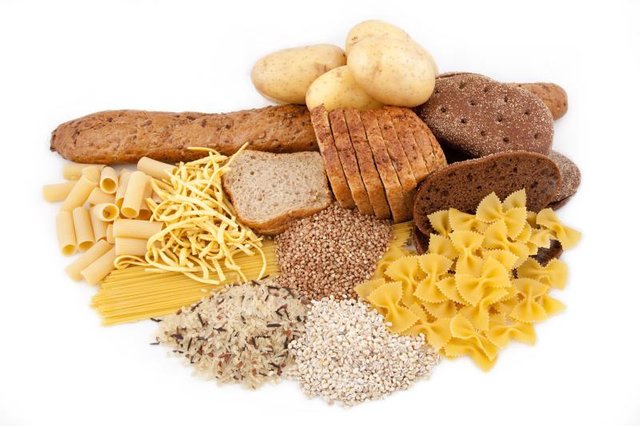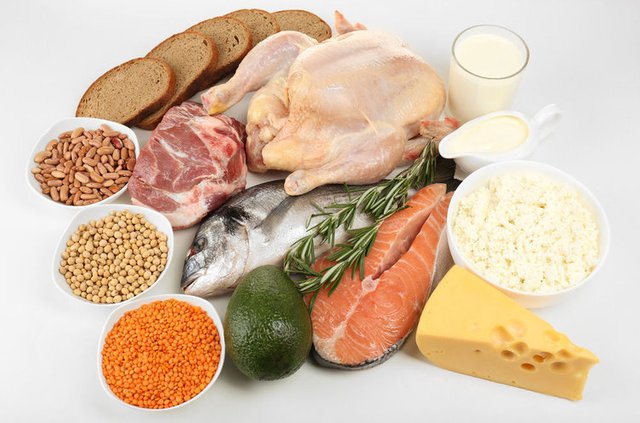Athletes and proper nutrition
Athletes are constantly concerned with diet, what and how much to eat to build mass or lose body fat. But it is a mistake to diet without first understanding the basic principles of nutrition. These principles allow you to change your body composition through diet while maintaining maximum strength, health, and energy. They help you to build and maintain maximum muscle mass. Therefore, the basic principles of nutrition are as valuable to an athlete than the basic principles of training. Training has been improved over the years. So I believe the reason we see more and more first rate competitors entering contests these days is due as much to increased knowledge of nutrition as it is to better methods of training.
Needless to say, better nutrition will not create a champion without a lot of hard and dedicated training. I believe that the balance of factors involved is equal parts training, nutrition, and mental attitude. In the past, athletes approached diet and nutrition on an instinctive basis. So, at first, they were able to build muscle and strength, but not get the most of it.
The fundamentals of nutrition are relatively simple. Learning to apply them to your own training, understanding the individual needs of your own body, how it responds to various kinds of weight-loss or weight-gain diets, is something else again.
Like any other aspect of training, ultimately you are forced to fall back on the Instinct Principle. First learn the fundamentals, isolating the variables that play such an important part in the production of energy and the building and maintenance of muscle tissue. Understanding nutrition is more than just knowing what the various nutrients are and how the body uses them, you have to learn to apply this information to your own needs and your own individual body type. The Special Requirements are virtually unique in the demands they place upon their bodies. They require simultaneously maximum muscle mass and minimum body fat, which is an extremely difficult state to attain. Athletes like gymnasts, boxers, and wrestlers, who need to become very lean, 'follow a training regimen that bums up so many calories that they rarely have to diet to reduce body fat. Nor do they usually attempt, as competition bodybuilders. Most strength athletes such as football players work to maximize the size and strength of the muscles with only minor attention to reducing body fat.
Nutrition is a complex and ever expanding science, and nutritionists are giving us new information almost daily. However, certain basic principles of nutrition are well established, and mastering these fundamentals is essential for atlethes who wants to achieve his total genetic potential for growth and physical development.
The Basic Nutrients There are certain basic nutrients which are necessary for the body to achieve maximum growth and energy production.
They are:
1. Protein 2. Carbohydrates 3. Fats
It is important to know which foods to eat and in what quantity in order to ensure that you get the necessary supply of each of these nutrients. Beyond this, you also have to be concerned with the relative balance of each of the nutrients how much of one you need in relation to how much of the others. No matter. what kind of metabolism or body type you possess, the biochemistry of the body requires that certain nutrients be present in specific combinations if you want to maximize the processes of building muscle, burning fat, and creating energy.
Protein
Protein is used by the body to build, repair, and maintain muscle tissue. Protein is made up of a number of amino acids, and the body cannot use the protein yon ingest unless all of the necessary amino acids are present. However, the body itself can only produce some of these amino acids. The others, called the essential amino acids, have to be obtained from the foods you eat. Some foods contain what is called complete protein, that is, they provide all the amino acids necessary to produce usable protein. Examples of these foods would be milk, eggs, meat, fish, and various vegetable products, such as soybeans. But even these foods contain differing amounts of usable protein per weight.
Carbohydrates
Carbohydrates are made up of atoms of carbon, hydrogen, and oxygen synthesized by plants through photosynthesis. The basic carbohydrates are:
Monosaccharides Glucose (blood sugar)
Fructose (fruit sugar)
Galactose (a kind of milk sugar)
Oliosaccharides Sucrose (table sugar)
Lactose (milk sugar)
Maltose (malt sugar)
Polysaccharides Plant polysaccharides (starch and cellulose)
Animal polysaccharides (glycogen)
Simple carbohydrates, such as those found in fruits and processed sugar, metabolize very quickly in the body. Complex carbohydrates, starch and cellulose primarily, are found, respectively, in foods like potatoes and rice and in a wide variety of vegetables. Complex carbohydrates take longer to metabolize and therefore have a kind of "time-release" effect in providing energy to the body. Carbohydrates are the easiest form of food for the body to convert into energy. Once ingested, carbohydrates are turned into glucose, which circulates in the bloodstream and fuels muscular contraction, and glycogen, which is stored in the muscles and the liver for future use.
Adequate supplies of carbohydrate are essential for the serious atlethes for a number of reasons:
1. Carbohydrate is a primary form of energy. The carbohydrate stored in the muscles as glycogen is what allows you to do heavy and intense training.
2. Muscle size is increased when the body stores glycogen and water in the individual muscle cells.
3. Carbohydrate in the body has a "protein-sparing" effect, keeping the body from burning up excessive protein for energy.
4. Carbohydrate is the main source of energy that fuels the functioning of the brain, and deprivation can have severe effects on mood, personality, and mental ability.

Fats
Fats are made up of the same elements as carbohydrates carbon, hydrogen, and oxygen but the way the atoms are linked together is different. Fats can be found in both plants and animals and are insoluble in water. They are grouped in three categories: simple fats (triglycerides), compound fats (phospholipides, giticolipids, lipoproteins), and derived fats (cholesterol).
Fats in the body serve three basic functions:
(1) They provide the major source of stored energy
(2) they serve to cushion and protect the major organs
(3) they act as an insulator, preserving body heat and protecting against excessive cold.
Fat is the most calorie dense of any nutrient. A pound of fat contains about 3,500 calories, as opposed to 1,600 calories stored in a pound of protein or carbohydrate. When you exercise, assuming you stay within your aerobic capacity (don't get out of breath), the body uses fats and carbohydrates for energy. But the longer you continue to exercise, the higher the percentage of fat used. After three hours or so, the body may derive as much as 80 percent of its energy from fat.
Fat molecules differ biochemically in their composition, being either saturated, unsaturated, or polyunsaturated. (These terms simply refer to the number of hydrogen atoms that attach to the molecule.) In addition to other factors, diets high in saturated fat tend to raise the cholesterol level of the blood. Therefore, health experts recommend that something like two-thirds of your fat intake be polyunsaturated.

Fats
Hope you like my Post's
Sources:
